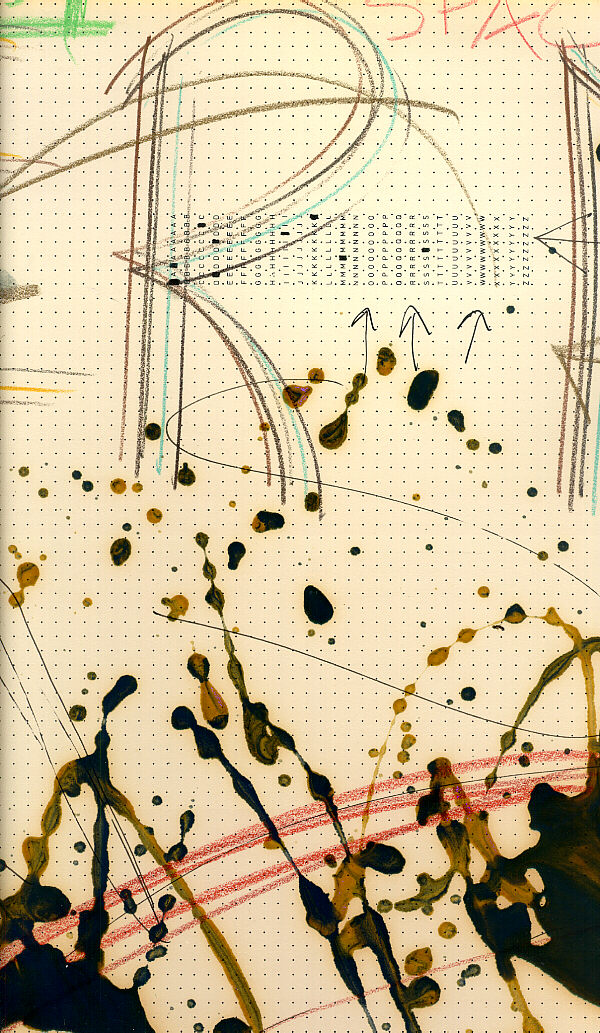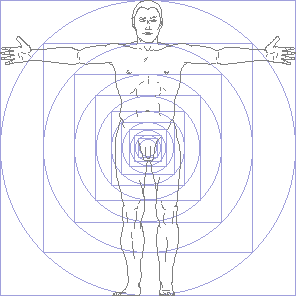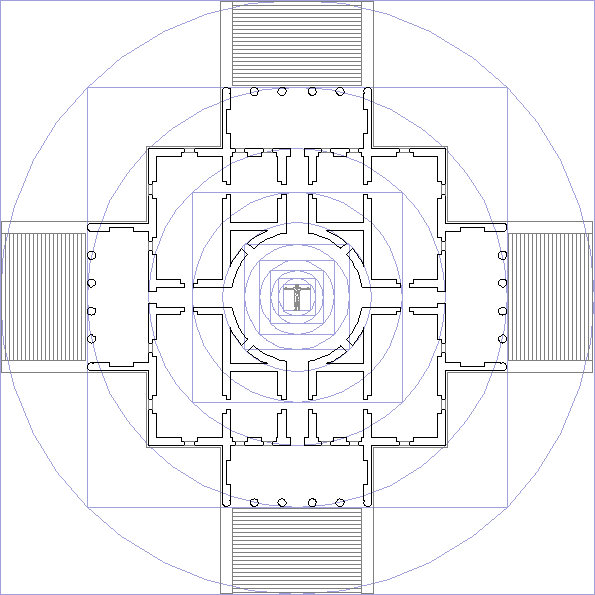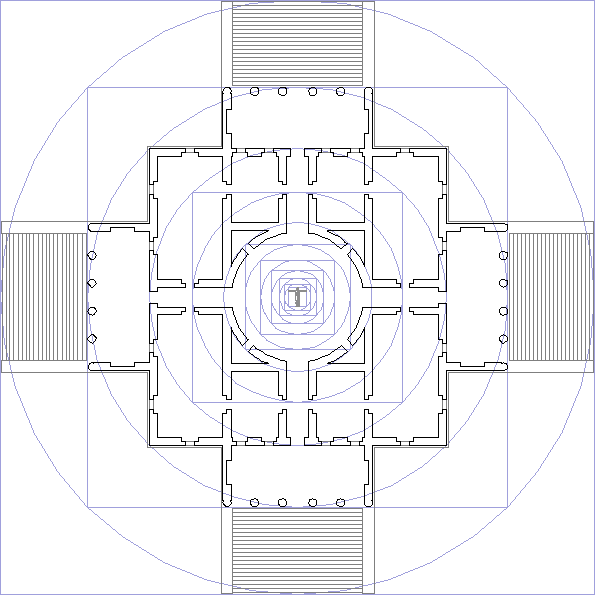2013.02.28 12:38
28 February
1984:

| |
1996:
...drawing--the circle/square man laying in the middle of the Villa Rotunda plan.

The proportions of both man and the Villa Rotunda coincide with a progression of circle/square junctures, and the point of this exercise was to find out whether Palladio based the proportions of the Villa Rotunda on the height of a man. According to the results, it appears that Palladio did not base the proportions of the Villa Rotunda on the height of a man.

Here man is 6.77' tall.

Here man is 4.78' tall.
| |
from smallest to largest
...idea of presenting as many Campo Marzio plans as possible in order of size from smallest to largest. Again, I have no idea what the lesson is supposed to be, but I think it will actually show something that has never been seen before. Of course, gigantism will still be the primary object lesson concerning the Campo Marzio, but I might find out that the smallest buildings (crypts, tombs) are even larger than most normal sized buildings.
2000:
reenactionary notes
1. human history as a reenactment of the human body.
2. the operation of the human imagination as a reenactment of corporal physiology and morphology.
3. Plato's dialogues as reenactments.
4. architecture as a reenactment of human imagination.
5. the Latin and Greek cross plans as reenactments of the original St. Peter's and the original martyrium at Golgotha.
6. a reverse reenactment of the promenade architecturale "buildings".
7. completion of the promenade architecturale documentation.
8. completion of "Stirling's Muses".
9. Maison Dom-ino reenacted.
10. "Inside the Density..."
11. Las Vegas as oasis reenacted--Villa d'Este.
12. metabolic architectures.
13. osmotic architectures.
14. extreme architectures.
15. fertile archtiectures.
16. pregnant architectures.
17. assimilating architectures.
18. electromagnetic architectures.
19. all frequency architectures.
20. Ludwig II of Bavaria.
21. Disney Land/World.
22. Acropolis reenactments.
23. cloning.
24. hypermural at the Altes Museum.
25. sacred and the profane (also Eliade's Myth and Reality).
26. Rossi's Modena Cemetery/Bustum Hadriani.
27. cardo and decumanus, Roman planning (urban military).
28. Washington DC/Versailles.
29. eros et thanatos.
30. reenactment of mistakes (Fasolo, Tafuri, Eisenman).
31. reenactment relative to mimesis.
32. Revelations as coporal reenactment.
33. City of God Against the Pagans
34. tomb of Augustus--the Great Stupa.
35. redrawing the Campo Marzio as reenactment.
36. philosophy of Collingwood (plus maybe Vico and Croce).
37. dies sanguinis--reenactment of my own birth.
38. Tacony Creek Park (environmental center).
39. theme parks (Huxtable, Sorkin, etc.).
40. Hadrian's Villa.
41. reenactment of the real within the virtual.
42. Benjamin Franklin Parkway--reenactments in Philadelphia (many).
43. circle/square junctures.
44. Kosovo.
45. VSBA reenactments (Princeton, Philadelphia).
46. Brothers Metabolic--Holy Thursday.
47. Izmit earthquakes.
48. Olney's religiuos trilogy.
49. Simulacra and Simulation (Baudrillard)
50. Ottopia.
51. homo ludens.
52. MOVE as reenactment.
53. metaphor as reenactment (?).
54. dies sanguinis reenactment as performance art.
55. innuendo(?).
56. operative versus historical criticism as reenactment(?).
57. "I was doing Stella, frankly."
58. Imaginations, Zeitgeists and Architectures.
2007:
Theory Part II - Doing What I Said I Would Do...
...does theory today make better designers? Personally, I think teaching style and technique would make better designers, where theory applies to the various styles and techniques and not so much to forming a priori thought processes of the designer.
Most of my architecture teachers worked in Kahn's offices and/or were students of his studio at Penn. Does Goldhagen mention Piranesi's Campo Marzio hanging over Kahn's office desk or the Guadet volumes on the desk?
Naturally, his thinking has foundations in architectural history. As Joseph Esherick sees it, "There is a moral injunction and an ethical character about Kahn's pronouncements. It is familiar in the writings of Julien Guadet, whose Éléments et Théorie de l'Architecture in four volumes (1870-1880) posits that the elements of architecture are not the ancient orders but they are windows, walls, floors, and light. The idea that a wall wants to be a wall and the idea of master spaces and slave spaces are both in Guadet. I remember," Esherick adds, "that the prominent thing on Kahn's desk when I first went to meet him in the late 50s was a copy of Guadet's old testament."
C. Ray Smith, Supermannerism: New Attitudes in Post-Modern Architecture (1977), p. 82-3.
Note to self: Kahn reenacts both Piranesi and Guadet?
2011:
The art of faking it
l.t wrote:
'...and the idea was the relationship of the space which was made up of the fold of the image and the dialectic or the conflict between the figuration, and the kind of clarity of the image and the complexity of the space which were in dialog.'
Does anyone get this sentence? What's the idea? I'm not trying to dismiss Mayne or anything but sometimes man...what the heck is this guy talking about?
Lauf replies:
A case of over articulation leading to inarticulation. Perhaps the same could be said of the architecture
2013:
Start finishing the Mayor's House model/design (with all of the above in mind?).
|